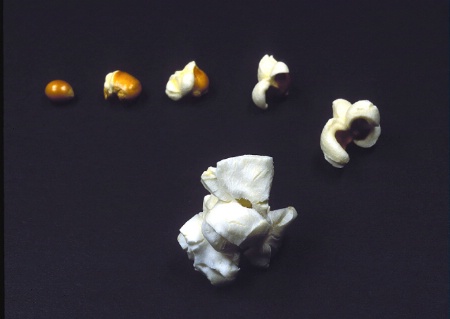
Stephanie Sherwood |
|
Black Backdrop Showing up Grey
I am getting more into backdrop work. I usually do outdoor & actually find it easier to work with lighting. Now that I am in doors working with lighting it is tough at times. I usually don't have a problem. BUT I am right now. My black backdrop is turning up greyish in the photos. It is a paper backdrop that I am usuing. One Light w/umbrella.(white).
Below are photo's I have taken. The first two have been made darken to get the blacker background through photoshop, the last one is what the actual background keeps coming out as.
This is the first time I am working with a paper backdrop. Prior I have used a black felt backdrop that worked pretty good.
Any suggestions? What am I doing wrong?
February 12, 2006
|
|
|
Glenn E. Urquhart |
|
Hi Stephanie - Funny you should mention problems with black paper. For the last few weeks I have been indoors, experimenting with still lifes. A few days ago, I used black paper as a back drop and like you.... GREY! Wasted a few hours on that day. What ever your doing wrong, so am I!
I do not have a good answer for you, except go back white paper as I have. Cheers, Glenn.
February 12, 2006
|
|
|
Mark Feldstein |
|
Well Steph: I'd say the problem you're having is spill from your umbrella washing the black background causing it to lighten into one shade of gray or another. There are a few solutions, individually or in combination. First, you may be able to get a "spill kill" reflector to use along with your umbrella. Another solution is to move the subject and/or the light source away from the background while controlling the spill from your light source. If not with a spill kill, then perhaps by using light panels to block the extraneous light. Also, make sure any extraneous room light from windows or fixtures, lamps etc., is off/ blocked or not hitting your background. Take it errrr...light.
Mark
February 12, 2006
|
|
|
Pete H |
|
Stephanie, I'd venture a guess your backdrop is paper?
While good in a pinch, it is not the best choice for black.
Cloth, velour or felt are the drops of choice for black as they actyally have the ability to scatter and absorb light. Now white, paper will do fine.
All the best,
Pete
February 12, 2006
|
|
|
Mikki Cowles |
|
I don't know...white paper can look grey also, if you don't have enough light to keep it white...:o)
The black paper will work, but you need to rig up a snoot to keep ANY light from spilling onto it. Tilting it down, so it can't reflect any of the light will help, and get it as far away as you can from your subject and the light.
February 13, 2006
|
|
|
Autumn Hernandez |
|
I haven't worked with lights other than the natural lighting that comes in my front window and sometimes the flash on my camera, but I usually shoot on a black background. (when doing portraits of my daughter) I use a velvet piece of fabric and I love how rich the color stays. Also, and other people can tell me if this would work or not with the lights, but could you find the proper exposure without your subject in the frame and just the black backdrop and under expose by 1-2 stops? I always underexpose my shots when I shoot a black background and they work wonderfully. Once you find the right exposure for one tone, the rest should fall into place. But, like I said, I don't know as far as extra lighting goes, how that would work, but it seems logical.
February 13, 2006
|
|
|
Bob Cammarata |
|
|
|
|
|

Darwin's Favorite Snack Food
Nikkor 55 mm, 80-A filter, Provia 100
Bob Cammarata
|
|
|
|
Stephanie,
All of the advice given was good and will help to darken black backgrounds. Black paper is notorious for reflecting light and turning gray.
I think Autumn was on the right track in mentioning to under-expose the background.
The more you under-expose it, the blacker it gets.
Use the advice given to direct or position the light source and take a meter reading off a bright portion of the subject and then off the black background. The black should meter at least 3 or 4 stops under if your subject is close to the background...(2 stops will usually work if it's farther away). In the attached example, the subjects were arranged on a piece of black poster-board, which reacts to light the same as black paper. The difference in the meter readings off the front kernal and the black background was @ 4 stops.
February 14, 2006
|
|
|
|
Log in to respond or ask your own question.
|